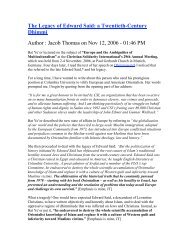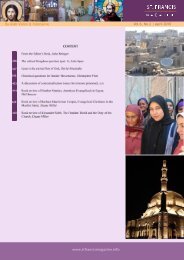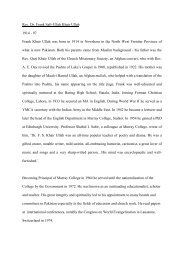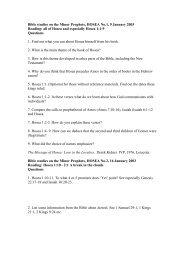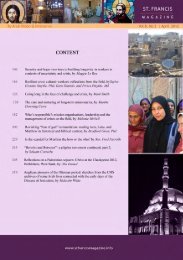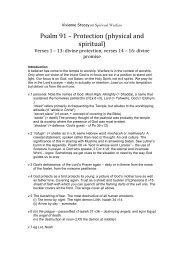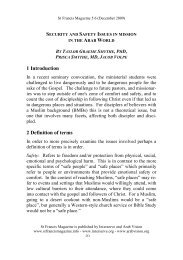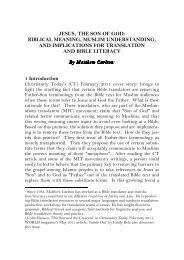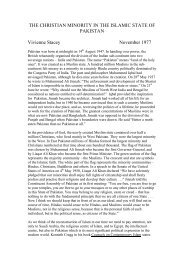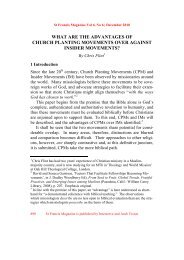download the pdf - St.Francis Magazine
download the pdf - St.Francis Magazine
download the pdf - St.Francis Magazine
You also want an ePaper? Increase the reach of your titles
YUMPU automatically turns print PDFs into web optimized ePapers that Google loves.
<strong>St</strong> <strong>Francis</strong> <strong>Magazine</strong> Vol 8, No 4 | August 2012<br />
1. Adalah (justice) meaning that men should strive to fulfill<br />
God’s will in this world ra<strong>the</strong>r than wait for divine justice in<br />
<strong>the</strong> hereafter.<br />
2. Imamah (imamate) meaning that <strong>the</strong> world needs <strong>the</strong> presence<br />
of an infallible guide who represents divine power.<br />
(Taheri 2008, 24).<br />
The long standing quarrel between <strong>the</strong> two major sects of Islam<br />
stems from <strong>the</strong> very beginning of Islam. The familial line of Muhammad<br />
felt that <strong>the</strong> pious and simple life embodied <strong>the</strong> teaching of<br />
Muhammad. They felt that Hussein, <strong>the</strong> second son of Ali and<br />
grandson of Muhammad, stood in opposition to <strong>the</strong> growing wealth<br />
and power of <strong>the</strong> Islamic elites. Hussein called for social justice and<br />
standing against <strong>the</strong> darkness of evil, represented in <strong>the</strong> Umayyad<br />
dynasty (661-750 A.D.). In 680 Hussein, along with 70 men, stood<br />
against <strong>the</strong> Umayyads at Karbala, south of Baghdad, saying that,<br />
“Death is preferable to compromise between right and wrong”<br />
(Mackey 1998, 55). The Umayyad army which numbered in <strong>the</strong><br />
thousands butchered Hussein along with <strong>the</strong> rest of his companions,<br />
severing <strong>the</strong> heads in a battle known as <strong>the</strong> “Plain of Sorrow and<br />
Misfortune” (Mackey 1998, 55). Shi’ism claims that Muhammad’s<br />
three immediate caliph successors were usurpers who had come to<br />
Islam with hidden agendas to destroy it from within.<br />
From <strong>the</strong> first century of Islam, <strong>the</strong> martyrdom of Ali and Hussein held<br />
particular meaning for Iranians. With <strong>the</strong> recesses of <strong>the</strong>ir minds and<br />
souls, Iranians saw in <strong>the</strong> Shia martyrs shadows of <strong>the</strong>mselves. For<br />
<strong>the</strong>y too were a defeated and humiliated people whose rights and deepest<br />
convictions had been trampled (Mackey 1996, 85).<br />
But it was not until 1490 that <strong>the</strong> young thirteen year old Safavid<br />
Shah Ismail converted everyone in Iran to Shi’ah Islam “on<br />
pain of death” (Forbis 1981, 34).<br />
In particular, <strong>the</strong> life and death of Ali, <strong>the</strong> cousin of Muhammad,<br />
profoundly mold Iranian morality, values, and character (Mackey<br />
1998, 53). Karbala stands as a tragic moment when piety sacrificed<br />
itself for justice. Every year Shi'ites commemorate <strong>the</strong> slaughter of<br />
Hussein on Ashura, <strong>the</strong> tenth of Muharram. Iranians and Shi’ites<br />
<strong>St</strong> <strong>Francis</strong> <strong>Magazine</strong> is a publication of Interserve and Arab Vision 406


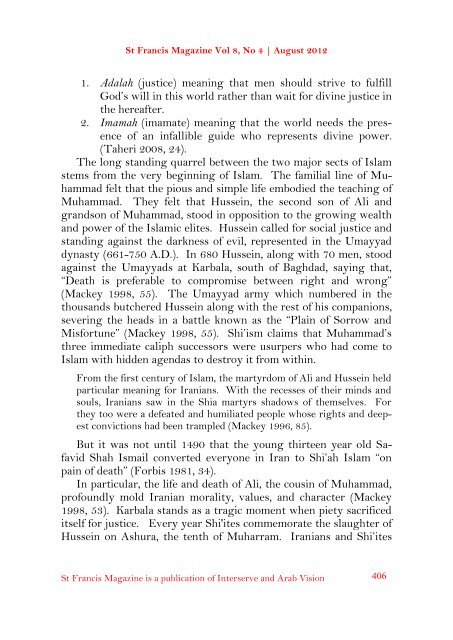

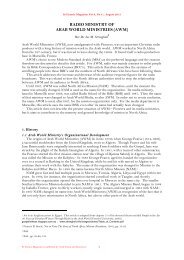
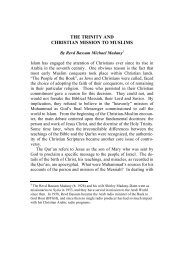
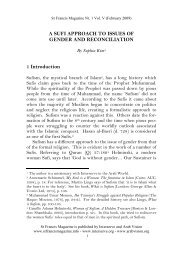
![Reflections on Surah Fatiha and the Lord's Prayer[1] - St.Francis ...](https://img.yumpu.com/49377951/1/184x260/reflections-on-surah-fatiha-and-the-lords-prayer1-stfrancis-.jpg?quality=85)
